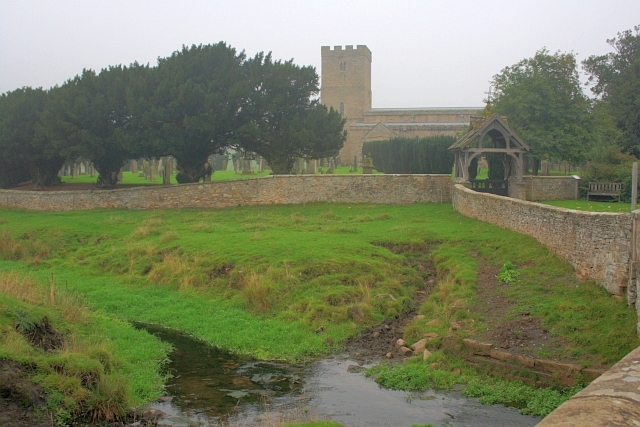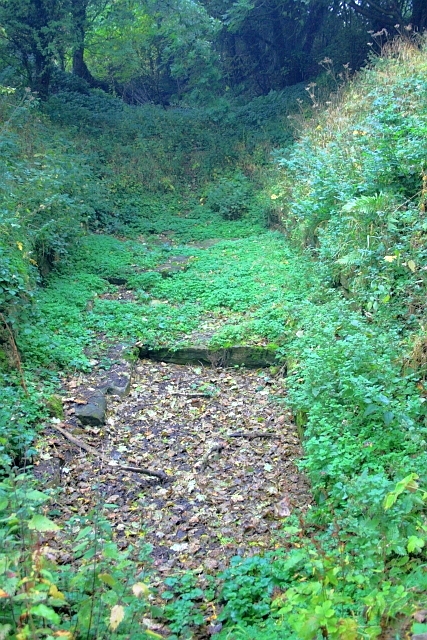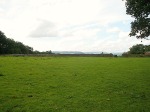
Plan of the Stanwick Fortifications (after Wheeler)
OS Grid Reference: NZ 1820 1161. The Stanwick “late” Iron Age hillfort, also known as Stanwick Camp, lies some 8 miles to the north of Richmond, north Yorkshire, covering a large area of more than 700 acres and up to 5 miles in length, north of the village of Stanwick St John, with the earthworks spreading out from the hillfort itself. The hillfort or oppidum was built by the Brigantes tribe of northern England in three different phases roughly between 47-72 AD, with the first phase of the fort being at Toft Hill. The Brigantian leader Venutius, husband of Queen Cartimandua, was “thought” to have been defeated and killed by Roman troops from York at Stanwick in 74 AD – at about the same time that parts of the fort were destroyed by fire, but the fire was ‘probably not started by the Romans’ – although Quintus Petillius Cerialis, who was Roman Governor of Britain (71–74 AD), might have had a hand in that destruction at some point. Cartimandua maybe settling in at her base of Castle Hill (Almondbury) after 69 AD?

Mary Wild Beck and Stanwick Church by Mick Garratt (Geograph).
Stanwick hillfort and its associated earthworks officially start at the village of Forcett from where there are some well-defined footpaths taking in the ancient monument, traversing its impressive and quite formidable ramparts and ditches. But the medieval church of St John the Baptist at Stanwick St John is the place to head to, and just to the south-west lies the hillfort known as Toft Hill (the Tofts), although there are grassy earthworks all around here running for several miles. Locally these earthworks are called Jack-Dike Arches. And there are ancient burial mounds which perhaps date back the late Bronze Age and the late Iron Age. Stanwick hillfort and its associated earthworks were excavated by Sir Mortimer Wheeler in 1951-52. In more recent times 1981-86 excavations were carried out by Durham University. St John’s Church at Stanwick houses a number of antiquities including a 9th century Anglo Saxon cross-shaft.
Harold Priestley in ‘The Observer’s Book of Ancient & Roman Britain’, says of the Stanwick site: “If not the most impressive to view, this fortified area is the largest and greatest engineering feat of the Iron Age tribes. It started as a 17-acre (6.9-ha) fort in the early 1st century AD, and was twice extended until the fortification enclosed no less than 747 acres (302 ha). It is believed to have been the rallying-point of the Brigantes under their king Venutius who revolted against the Emperor Vespasian in AD 69. His queen, Cartimandua, had taken the side of the Romans and may have set up her headquarters at the fort at Almondbury near Huddersfield.
“In about AD 50-60 (after the Roman conquest of the S of Britain) another 130 acres (53 ha) to the N of the fort were enclosed by a bank and ditch except on the SE where a stream, the Mary Wild Beck, acted as a barrier. The fortifications between the old and new sections were demolished. Part of this bank and ditch have now been restored.

Horse’s-head plaque, Stanwick
“The final huge extension covering some 600 acres (243 ha) was made to the S of the Beck and brought into the fortified area a rough quadrilateral of land capable of accommodating an army and pasturing horses and cattle. It was enclosed within a bank and ditch with an in-turned entrance on the S. There are signs that the fortifications were attacked by the Roman commander Cerialis before this section was completed. Part of the ramparts then appear to have been deliberately destroyed. No account of this campaign has ever been found, but the fall of Stanwick opened the way to the N for the Roman armies.”
Author Ian Longworth in his work ‘Regional Archaeologies – Yorkshire,’ says of the Stanwick fortifications: “The fortifications lie on a rolling piece of land between the modern villages of Aldburgh St John and Caldwell. The site was hardly chosen for its commanding position, for the ground here does not rise above 100 feet. Rather it was chosen as being near a good supply of water, the Mary Wild Beck. In their final form, discounting a later addition on the south side, the earthworks enclosed an area of over 700 acres, but the first fortification was a more modest affair enclosing 17. This more or less coincides with a rough field known as ‘the Tofts’ south-west of Stanwick church. The defences were impressive, for a man standing on the bottom single ditch would look up to a rampart rising to a height of 24 feet. Naturally access had to be provided across the rampart and a gateway left at the western angle. To strengthen this point the flanks of the gateway were revetted with dry-stone walling.

Stanwick Iron Age Fortifications by Mick Garratt (for Geograph).
“Although only a small portion of the area was examined, a series of drainage ditches were found inside the enclosure together with the remains of a round timber hut with an entrance facing east. This was set within a circular drainage ditch, which would have taken the water dripping from the conical roof. An interesting feature which emerged from the excavations at Stanwick was that only a quarter of the pottery recovered was home-made and these were mainly rough cooking-pots. The remainder of the pottery had all been imported. These imported wares included Butt Beakers from south-east England and fine red Samian Ware made towards the end of the first century A.D. in Gaul. The builders of the fortifications then had wide trading contacts with other tribes living farther south. This first fortification was probably built as a centre for anti-Roman resistance in northern Brigantia, shortly after the Roman invasion of A.D. 43.
“At a later date the fortifications were greatly enlarged. An enclosure of 130 acres was built to the north to supplement the first fortifications. This new enclosure cut off the northern end of the earlier work and, where this lay within the new enclosure, the old ramparts were flattened. The new enclosure was deliberately built to include some 300 yards of the Mary Wild Beck and, along this stretch, the brook and its marshy borders formed the only defence. Towards the western angle the new rampart was side-stepped to provide an entrance. This new rampart, which had originally been marked out with a small bank and ditch, was revetted in front by vertical dry-stone walling to a height of about 15 feet. Between the rampart and the ditch lay a berm—a flat space about 1 foot wide. The vertical height from the bottom of the ditch to the top of the rampart when first erected must have been something like 28 feet.
“Near the entrance a pool of muddy water had collected in the bottom of the ditch. This had helped to preserve the organic objects that had either fallen or been thrown in. An oak dish was found and fragments of basketry, as well as an iron sword in a bronze-bound scabbard made of ash wood. Near the sword lay a skull showing very definite signs that its owner had met with a violent death. The skull had been slashed twice across the eye and a third blow had sliced of a piece of frontal bone which lay nearby. The head had been severed from the body between the fourth and fifth vertebrae. The victim was perhaps a criminal or prisoner and may well have suffered the fate of having his head stuck on a pole at the gate.
“The final stage of the construction was marked by a huge extension to the enclosure with a bank-berm-and-ditch defensive system to the previous fortification. The new fortifications enclosed some 600 acres and provided ample pasturage for horses and cattle. The entrance lay in the middle of the south rampart in the form of a Z-shaped breach, but no gates were found. This final reconstruction was never completed. The causeway across the ditch opposite the gate had been roughly hacked through and blocks lay where they had been hurriedly levered up. The occupants had clearly had no time to finish their work before being called upon to defend themselves.
“It was probably Venutius who extended the fortifications at Stanwick and then extended them again in and after A.D. 69 when he was gathering his allies for a final stand against the Romans. The unfinished state of the last phase of the defences shows that the final battle came before the Brigantes were completely ready, and the deliberate destruction of part of the ramparts shows only too clearly the ultimate result of the conflict. The actual struggle is not documented by the historians, but the Roma victory must have been complete, for by A.D. 80 Agricola was campaigning in Scotland. A Scottish campaign would have been out of the question if the Brigantes were still menacing the supply routes to the south.”
The great Mr Arthur Raistrick in his work ‘The Pennine Dales’, tells us more about Stanwick. He tells us that: “At Stanwick, a prominent point, Toft Hill, had been converted into a defensive hill-fort, and one of the leaders of the fort builders was buried there, his body accompanied by his chariot. Many ornaments of bronze, some with stylized horse-head motifs, buried with him, were from the harness and chariot trappings.” Could this burial mound have contained the remains of Venutius, leader of the Brigantes, whom it was believed was killed by the Romans in 74 AD?

Butt beaker & Samian bowl, Stan-wick (After Wheeler).
Author Jaquetta Hawkes writing in 1975 says that: ‘The history of the Stanwick earthworks are revealed by Sir Mortimer Wheeler’s digging leads into the Roman conquest of Britain at a point where the pro-tagonists are known by name, thanks largely to the writings of Tacitus. Having conquered the lowlands, the Roman army was now thrusting into the highland zone. At this point the [Brigantes], probably the largest of all the British tribes and occupying much of northern England, were ruled over by Venutius and his queen, Cartimandua. Friendly policy towards the Romans had brought them the status of a client kingdom. In 51 AD Caractacus, the heroic leader of British resistance, asked for asylum at the court of Queen Cartimandua. She then handed him to the Romans in chains. The Brigantes were now in turmoil, with the pro-Roman policy still maintained by the queen, but now opposed by her husband and the elite of his warriors. Venutius and Cartimandua separated in violent hostility. Venutius then succeeded Caractacus as leader of the resistance, while the queen took his squire Vellocatus as her consort for bed and throne.
Hawkes goes on to say that: ‘With Roman support Cartimandua was able to hold out in the old Brigantian capital (possibly Almondbury), but the Brigantes and others rallied to Venutius. He later attacked Cartimandua with great success and she had to be rescued by Rome. As Tacitus put it on behalf of Rome ‘The Throne was left to Venutius, the war to us.’ But he was not allowed long to enjoy his victory. The Ninth legion came from York and ended the great Brigantian resistance for good.”
I would like to thank the late John Dixon, and family, for their bringing about of this site page through books and literature greatly received.
Sources of information and related websites:-
Barringer, J. C., The Yorkshire Dales, The Dalesman Publishing Company Ltd., Clapham, 1982.
BBC Publication, Roman Britain, The British Broadcasting Corporation, London, 1966.
Hawkes, Jacquetta, A Guide To The Prehistoric And Roman Monuments In England And Wales, Cardinal (Sphere Books Ltd), London, 1975.
Longworth, Ian H., Regional Archaeologies: Yorkshire, Heinemann Educational Books Ltd., London, 1969.
Priestley, Harold, The Observer’s Book of Ancient & Roman Britain, Frederick Warne & Co Ltd., London, 1976.
Raistrick, Arthur, The Pennine Dales, Arrow Books Ltd., London, 1972.
Ramm, Herman, Roman York – From A.D. 71, Yorkshire Architectural and York Archaeological Society, York, 1979.


Stanwick Hill Fort, Forcett, North Yorkshire
https://en.wikipedia.org/wiki/Stanwick_Iron_Age_Fortifications
Stanwick Fortifications, North Yorkshire
http://www.academia.edu/4032642/New_Geophysics_Results_at_Stanwick_Oppidum_North_Yorkshire
http://www.english-heritage.org.uk/visit/places/stanwick-iron-age-fortifications/
© Ray Spencer, The Journal Of Antiquities, 2017.

























